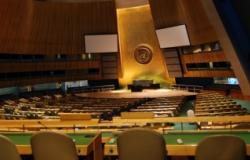
The metamorphosis of human security has become a topic of major importance in the context of globalisation. While its external appearance contains central tenets of the conception of security in the 20th century, human security has become increasingly sensitive to characteristics which are indissoluble from the loss of state capacity and legitimacy regarding the use of violence. These features have a direct influence on the contemporary conception of global threats. This article provides an in-depth examination of the discursive logic behind the notion of human security from the United Nations perspective, as well as how this connects with the recent characterisation of new global threats. Likewise, it has carried out an empirical estimation by using multivariate statistical techniques in the form of a nonhierarchical cluster analysis. This enables us to establish a multidimensional taxonomy of developed and developing countries that could help us to better understand the new discursive framework of global threats and human security. Finally, some implications of these findings for the current debate on country classifications are discussed.